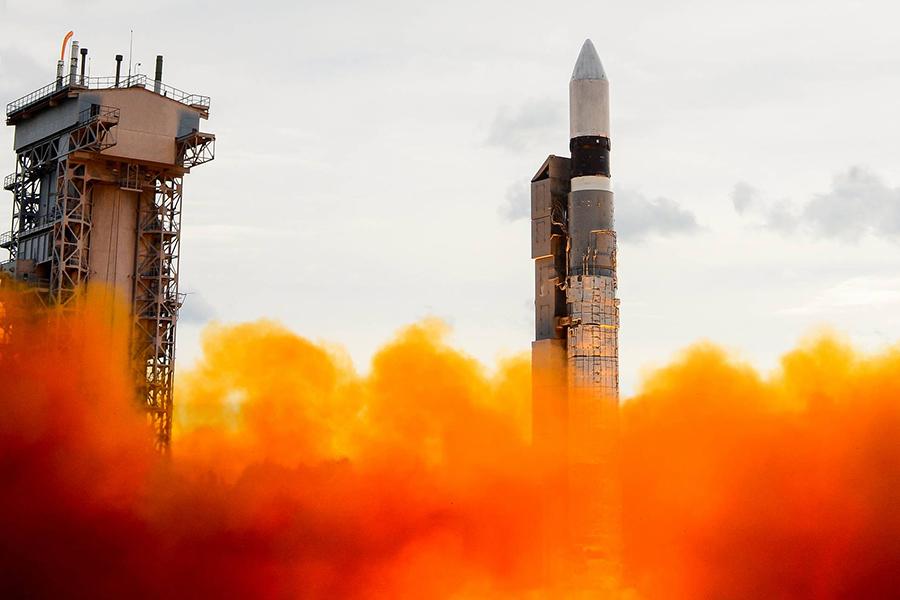Toxic rocket fuel in Arctic waters

A recent study published by Michael and Cameron Byers exposes how old Russian satellite-carrying rockets – paid for by the European Space Agency – end up dumping highly toxic fuel in both the Norwegian side of the Barents Sea and Baffin Bay between Greenland and Canada.
The study – published by the leading scientific journal Polar Record – describes how ballistic missiles named ‘Rockot’ (a modified SS-19 ICBM) are dropped in stages as they launch satellites into orbit. These ‘stages’ contain residual fuel of the type unsymmetrical dimethylhydrazine (UDMH), a highly toxic chemical that has caused considerable health and environmental damage in Kazakhstan and Russia. Since 2002, these drops have happened ten times, with the parts of the rockets containing unused fuel dropped in the Barents Sea and Baffin Bay in the Arctic. The next launch is scheduled for Friday, October 13.
"Requiring immediate action"
“This is an issue requiring immediate action by the Norwegian, Danish and Canadian governments,” says Michael Byers, a professor and holder of the Canada Research Chair in Global Politics and International Law at the University of British Columbia in Vancouver. He argues that “at a minimum, the upcoming launch should be postponed while scientists assess the risks and governments identify non-toxic alternative launch systems, which already exist in the United States, Europe, and even in Russia”.
When the rockets ascend towards space, they separate into what is called “stages”. Stage 1 is 17.2 meters long, while Stage 2 is 3.9 meters long. When the stages are shed at pre-defined points, they are carrying surplus fuel of up to 8 tonnes, with the surplus being carried to ensure they can complete their mission. The stages are then dropped, first in the Barents Sea around 150km north of the Norwegian mainland (Finnmark), and then in northern Baffin Bay, the body of water separating Nunavut (Canada) and Greenland.
A remnant from the Cold War
The fuel onboard, UDMH, is a remnant from the Cold War. In contrast to more modern and less toxic rocket fuel, it is stable at room temperature and thus allow its users to fill up the rocket and leave it in a launch tube for years. It is therefore not only Russia that has been using the fuel, but a range of actors from the United States to Japan and China.
Yet, concerns about its extreme toxicity have led to some of these countries looking at alternatives and phasing out the use of UDMH. An United Nations Development Program report from Kazakhstan states that the fuel “is dangerous in all methods of transmission to people” and chronicles serious health issues amongst people in areas that had been affected by the rocket fuel. A Russian study from the Northern Medical University later proved that “the death rate in affected areas has risen by 30%, mostly due to liver, blood and genetic diseases”.
Areas vital to local human populations
“The main concern is the effect the residual fuel might have on marine and human life in these two parts of the Arctic. Both debris fields in the Barents Sea and in Baffin Bay are located in the most biologically active parts of the Arctic, home to everything from Arctic cod to sea mammals and birds. In addition, these are areas vital to local human populations that sustain themselves off the marine activity”, says Michael Byers.
Moreover, the satellites that the ‘Rockots’ are carrying are paid for by third parties, such as the European Space Agency and several EU-member states like France and the Netherlands. This, Byers explains, makes these third parties jointly responsible under international law for any damage caused by the rocket launches. He recommends:
“The European Space Agency should stop launching satellites into sun-synchronous orbit on UDMH-fuelled rockets from Plesetsk Cosmodrome, unless and until it can be proved that UDMH poses no risk of serious harm to the Arctic environment and its peoples.” (From the study, p. 10).
Scheduled for October 13
In addition, Byers calls for scientific studies of the marine environment to determine the precise effects of UDMH in Arctic waters, as well as speeding up the process of replacing old SS-19 missiles with more modern alternatives.
The next launch is scheduled for October 13, 2017, as a joint project of the European Space Agency and the Dutch Space Agency. “Ideally, this launch will be postponed while everyone concerned learns more about the risks and possible solutions”, says Byers.
Les den norske versjonen av denne artikkelen.
